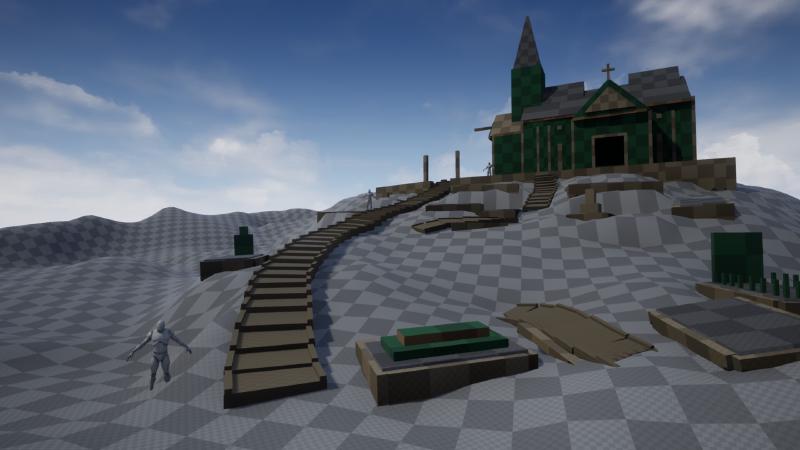Idea and Research
Starting a new environment, I decided to share the creative process with anyone out there that might have an interest. I’m going to try to share a lot of development images. Not only I want to show you the thing though, but I want to tell you about it too. As such at times I will be wordy. I hope that if nothing else, you find it at least intriguing.
We are making quite a sharp turn, going from way back in 15-16th century Feudal Japan to the not so distant future. A ruined, probably abandoned cemetery. On the very top of its hill, a chapel stands proud. But there is a weird, modern twist to this. The world in which this place resides is a gritty, Cyberpunk world. One full of neon signs, electric colors, rain and vapour. The churchyard has been repurposed.
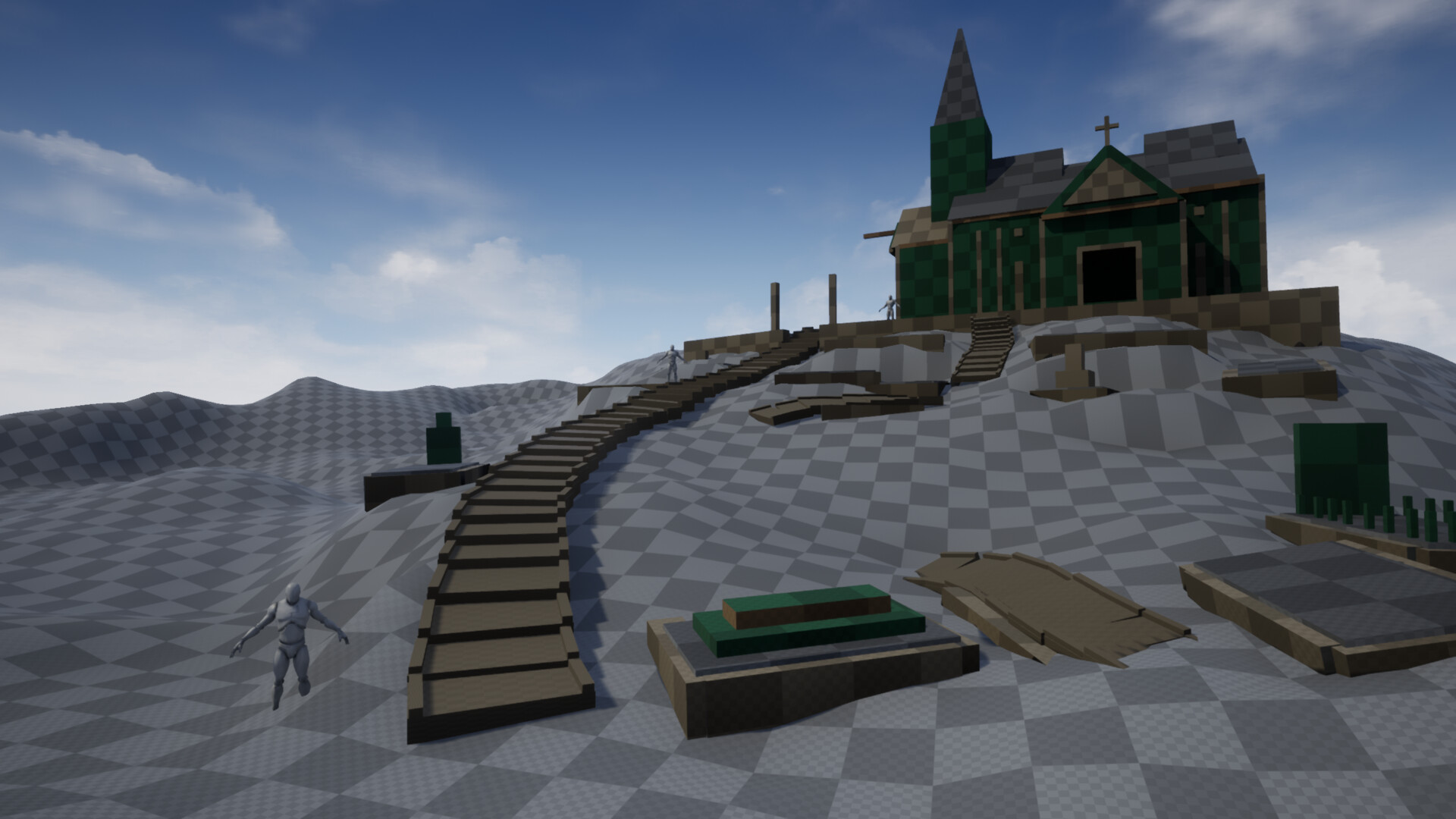
First screenshot looking at the project. Yep, you are not wrong, there is nothing of what I described above as an atmosphere in this. Not yet at least. This is an early greyboxing level phase. But before I show you more screenshots, in this first blog post, I want to first talk about the source of the idea.
Neon Lights
I got the initial idea (that changed a lot) from a magazine that I grabbed from a shop I randomly visited at the centre of London last summer. It’s the sort of store, where you see an original Marvel comics from now nearly a century ago displayed at its showcase window and you immediately think that its a place you gotta walk into. The magazine I bought is Analog Science Fiction and Science Fact, or that’s what it used to call itself back in November 1972. That’s when the issue I got was first published. It’s cover painting is what allured me to buy it though, more than anything else.
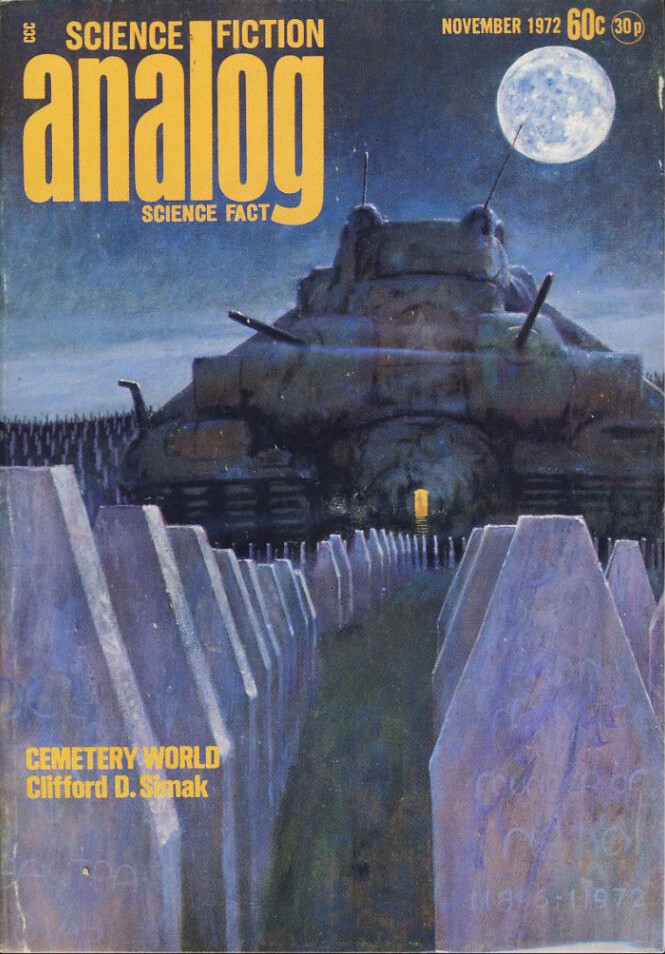
I loved the “retro sci-fi” vibe of the painting. Cemetery World, it said. By Clifford D. Simak. The illustration is by John Schoenherr.
To Mother Earth the star-flung humans returned for their final rest.
But the worldwide Cemetery was something far more sinister than a burial ground.
And far more dangerous.
I will spare you a lot of details. The very cool one though, the shoulders of which the whole story stands on, is the idea that Earth is turned into a cemetery. Humanity expanded throughout the Solar System and then into distant planets and stars. Earth was left. Abandoned. Civilisation remembers it though, and whenever someone passes away, they are sent back. They are carried through countless light-years of distance and buried on Earth. And so the planet is turned into a Cemetery World.
In the story Earth is sort of flat lands and wherever you look what meets the eye is only gravestones. There is a bit more than that, of course, but I will skip it for now. But I recommend everyone to read the story if they like the sound of it.
After I read that, I got the idea for a 3D work. A landscape where everything is filled with gravestones. And if its mainly gravestones, I thought, then it might not be that time consuming to create. As such I left it in my mind, as a sort of quick 3D project to go back to later on.
That’s when I started the Feudal Japan challenge that I mentioned. And for the 2 months whilst making that, I couldn’t get the cemetery idea out of my mind. And while working on Japanese architecture, I listened to quite a few albums on a loop. And one of them was Twenty One Pilot’s new one Trench. If you’ve heard the album, you will know where I am going with this.
The album features songs with quite the odd names, and then even weirder lyrics. But that’s what I, and I’m sure everyone else that listens to them, loves about them. One of the songs goes by the name Neon Gravestones.
♪ ♫ Neon gravestones try to call for my bones… call… call… call… ♪ ♫
And when I heard that lyrics, I got the mental image. The churchyard with the countless gravestones. A chapel on top of the hill. And then the best part — everything was in neon lights. A mockery of death of some kind. On top of the church there would be neon lights advertising something. The gravestones, instead of having ordinary chiselled inscriptions into the stone, would have neon lights too. I then knew I want to have a go making a 3D environment out of it.
More Light. James Turrell.
I wanted to research more visual aspects, before doing any block-outs. Light is of a very big importance in this project, and I was worried I wont know in what direction to go with it. As such I gathered a few reference sheets, with countless of neon light signs and lots of electric colors. That is when I came across the name of James Turrell.
I came across an art installation by him. One that deals exclusively with light. And even better, it has a chapel in it. It’s situated in a cemetery in Berlin, where supposedly notable German figures like Hegel are buried.
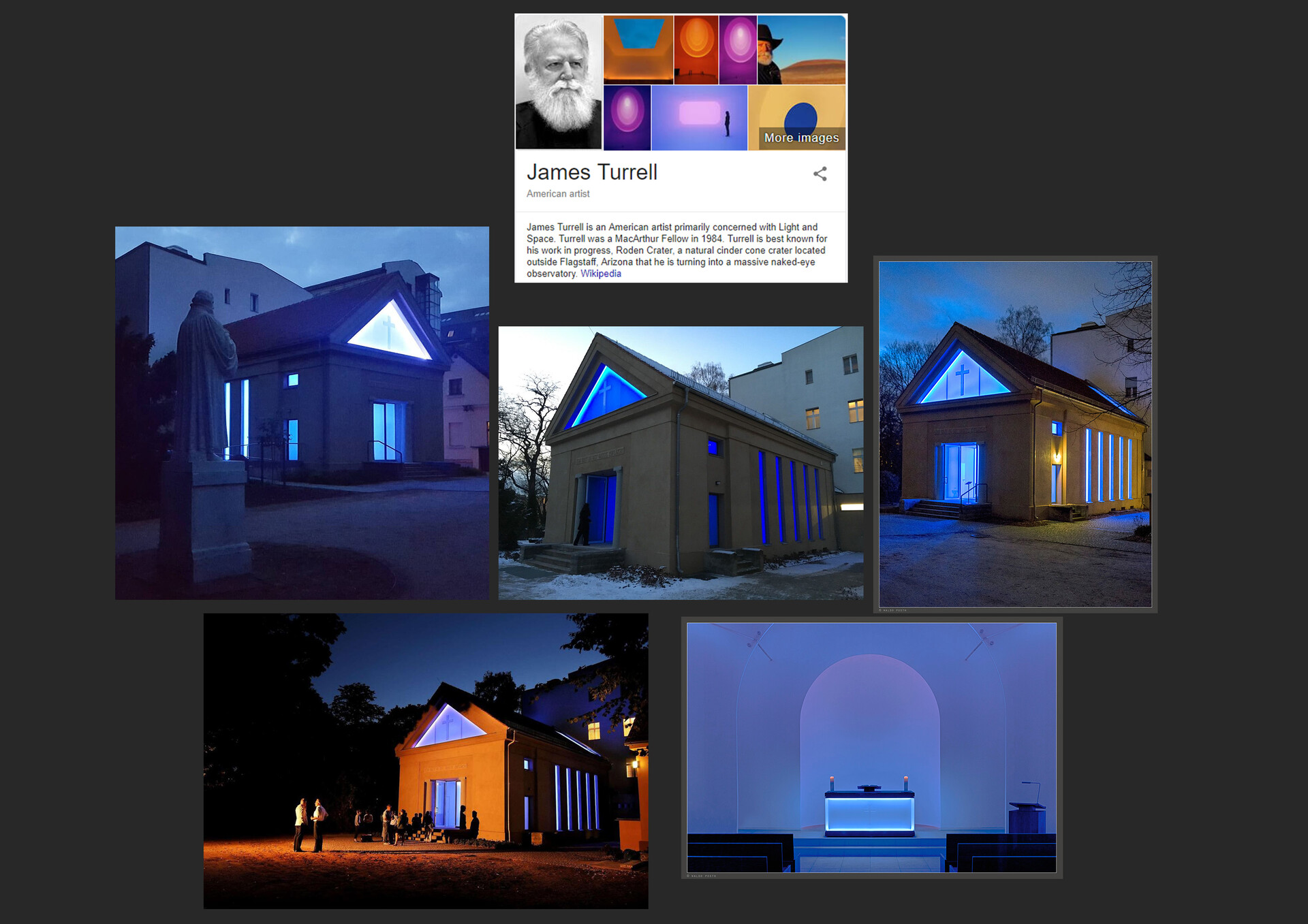
I am very happy I stumbled so randomly upon Turrell’s name. The elegance, with which he uses light, I am not so sure I will manage to replicate. But still, the idea itself, will help me turn into the right direction for my environment. I read more into Turrell, and found lots of amazing aspects of his work about which he talks.
In my work, light is not so much something that reveals as it is itself the revelation.
He says how:
There is no object in my work. There never was. There is no image within it.
And I would love to have a go at replicating that feel. I know it wont 100% work in my case. I am going to be modelling props and making fancy architectural elements on my buildings. I will light them up in the fashion that he does, but they will be the object. At the end, my work wont be as elegant and simple as his. Going for Cyberpunk, there will be a clustering of light unlike what we see with his.
I am still very happy I got to read about his work, because it made me think of light in a different way. Instead of as a tool, as an object of interest itself. In a case where we don’t care about what it illuminates. We care about the light itself.
Another Progress Shot:
And now, given how lengthy this already is, I’ll just show you to what point I got after all of this research.
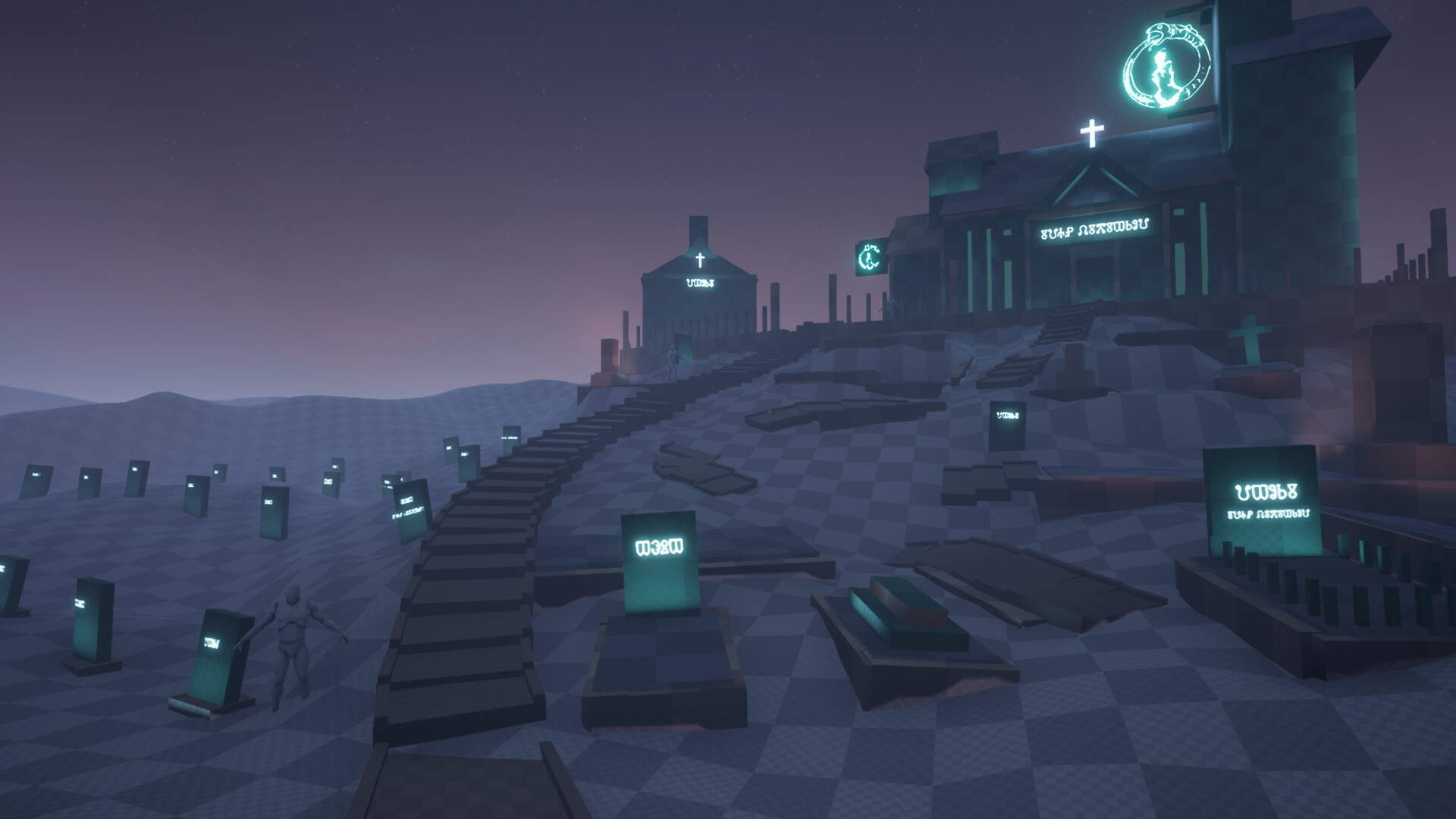
There is a weird circular neon sign and even more weird symbols in front of the gravestones, but I will talk about those next time. I will also show more in detail how I got to this step.
I hope you find what you are seeing and reading interesting.
Until next time,
Pete.
